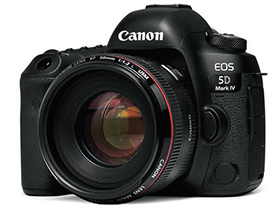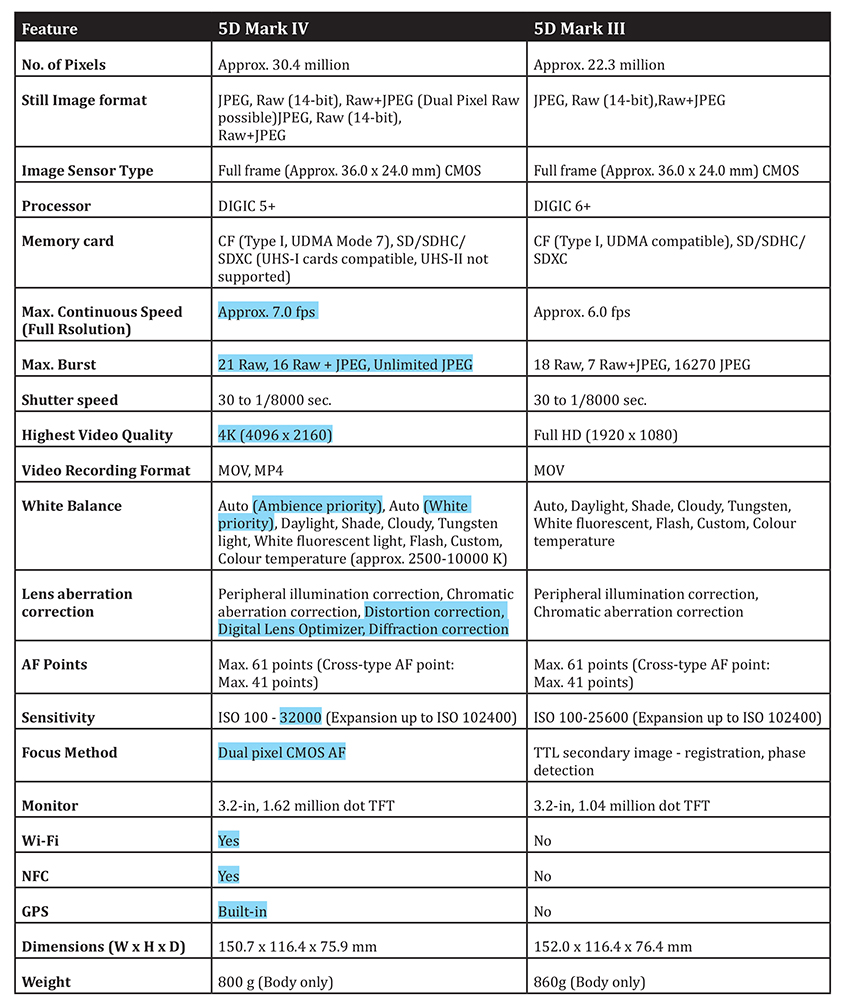 Many camera manufacturers make successful cameras. Very few camera manufacturers however end up making cameras that become iconic. The 5D series from Canon is certainly an iconic product. It all started with the introduction of the 5D in 2005. It saw immediate success. The 5D Mark II (2009) and 5D Mark III (2012) followed and the success story continued. Past experience suggests that tampering with an extremely successful, nay, iconic product is dangerous. Canon, therefore, had a challenging task with the EOS 5D Mark IV. The Mark IV was released just before Photokina 2016 and SP had an early sample on the test bench. How did it fare? Read on…
Many camera manufacturers make successful cameras. Very few camera manufacturers however end up making cameras that become iconic. The 5D series from Canon is certainly an iconic product. It all started with the introduction of the 5D in 2005. It saw immediate success. The 5D Mark II (2009) and 5D Mark III (2012) followed and the success story continued. Past experience suggests that tampering with an extremely successful, nay, iconic product is dangerous. Canon, therefore, had a challenging task with the EOS 5D Mark IV. The Mark IV was released just before Photokina 2016 and SP had an early sample on the test bench. How did it fare? Read on…
Design and Build Quality
Canon has kept the design fairly similar to the 5D Mark III, though there are differences. Viewed from the front, you will immediately notice a distinctive change if you are familiar with the previous versions in the series. The remote terminal has been moved to the bottom right, moving the series number to the bottom of the ‘5D’ marking. The smooth round edges give way to a subtle edged contour along the top panel. The back remains unaltered except for the addition of an AF area selection rocker switch below the multicontroller.
The side of the grip is marked for the NFC tag. The 5D has always held out as a weather-sealed body that can withstand all on-field rough handling. Weather sealing has been improved to the standards of the 7D Mark II with the shutter release button, movie dial, lens mount and battery and memory card lids getting improvement in weather-sealing. The camera has a magnesium alloy chassis and weighs 800g (body only).
Key Features
The 5D Mark IV is essentially an improvement of the 5D Mark II I and not the 5Ds series, which is an ultra-high resolution version of the camera. The new model carries lot of features that trickled down from the development of the flagship 1D X Mark II. To make it simple, we have tabulated the key improvements in the camera versus its predecessor, the 5D Mark III.
Now let us look at other features of this camera.
The 5D Mark IV is the first D-SLR from Canon to offer Dual Pixel Raw format. This needs some explanation. The camera features dual pixel CMOS sensor that made its debut on the 80D. In this, each pixel has two photo diodes, and till now the dual pixel pixel units have been used only for on-sensor Phase Detection autofocus. With the 5D mark IV, the extra photo diode assumes another very important role. In Dual Pixel Raw format, the Raw image stores two sets of data, one from a single diode and the other, the combined data from both the diodes. This allows the camera (or the processing software) to judge the amount of parallax and the defects caused due to parallax. Thus, the extra data allows you to improve sharpness through image micro adjustment, shift and improve bokeh, and reduce flare and ghosting. This can be done using the supplied Digital Photo Professional (DPP) software. Dual Pixel CMOS AF also allows touch-focus in Live View, even when the subject is in dark. This is available even in 4K video recording mode.
The camera records still images with a maximum size of 6720 x 4480 pixels. The dual card slot allows you to set the recording function to Standard (writes to the second card when the first becomes full), Auto switch card, Record separately (write Raw and JPEG in separate cards). The camera offers a new Fine Detail Picture Style that lets you capture fine detail. The 5D Mark II also has two Auto modes in White Balance—Ambience priority and White priority. The first option keeps the ambient light intact, while the second makes it neutral.
The viewfinder now provides a grid display and an electronic level in addition to the other information displayed. The camera incorporates a quick-return type mirror, which uses a twin cam mechanism and high torque motor to effectively control mirror vibration during shooting. The AF system uses a maximum of 61 points including 41 cross type points (of which 21 are sensitive to f/8 and wider apertures) and dual cross-type AF at five centre vertical points (sensitive to f/2.8). The overall AF area has been extended to cover a larger imaging area. The device uses an approximately 150,000-pixel RGB+IR metering sensor and 252-zone TTL open-aperture metering. Live View mode now features all the four metering modes— Evaluative, Partial, Spot and Centreweighted. 4K videos can be recorded at 29.97p, 25.00p, 24.00p or 23.98p. There is also a high frame rate movie mode at 119.9p. 4K still frame grab is available.
The 5D Mark IV features the usual shooting modes such as Scene Intelligent Auto, Program AE, Shutterpriority, Aperture-priority, Manual, Bulb and Custom. The camera uses an electronically-controlled, focal-plane shutter, providing shutter speeds from 30 to 1/8000 sec. The X-sync speed is 1/200 sec. The camera can shoot continuous images at up to 7.0 frames per second, though this depends on the settings. The camera accepts a CF and SD card simultaneously, however, it supports only UHS-I type cards. If you use UHS-II cards, it may even reduce the speed, depending on the type of card. It also supports Eye-Fi cards. The camera is compatible with Canon EX-series Speedlites.
Wi-Fi and NFC functions allow the camera to seamlessly connect with smartphones and Canon Connect Station and also lets you shoot remotely using EOS Utility. The built-in GPS receiver is compatible with GPS satellites (USA), GLONASS satellites (Russia), Quasi-Zenith Satellite System (QZSS) and MICHIBIKI (Japan).
Digital interface incorporates USB 3.0, HDMI mini OUT terminal (Type C), 3.5 mm stereo mini-jack and Remote control terminal (for N3-type units). The 5D Mark IV is powered by a rechargeable battery pack LP-E6N/LPE6 (supplied).


